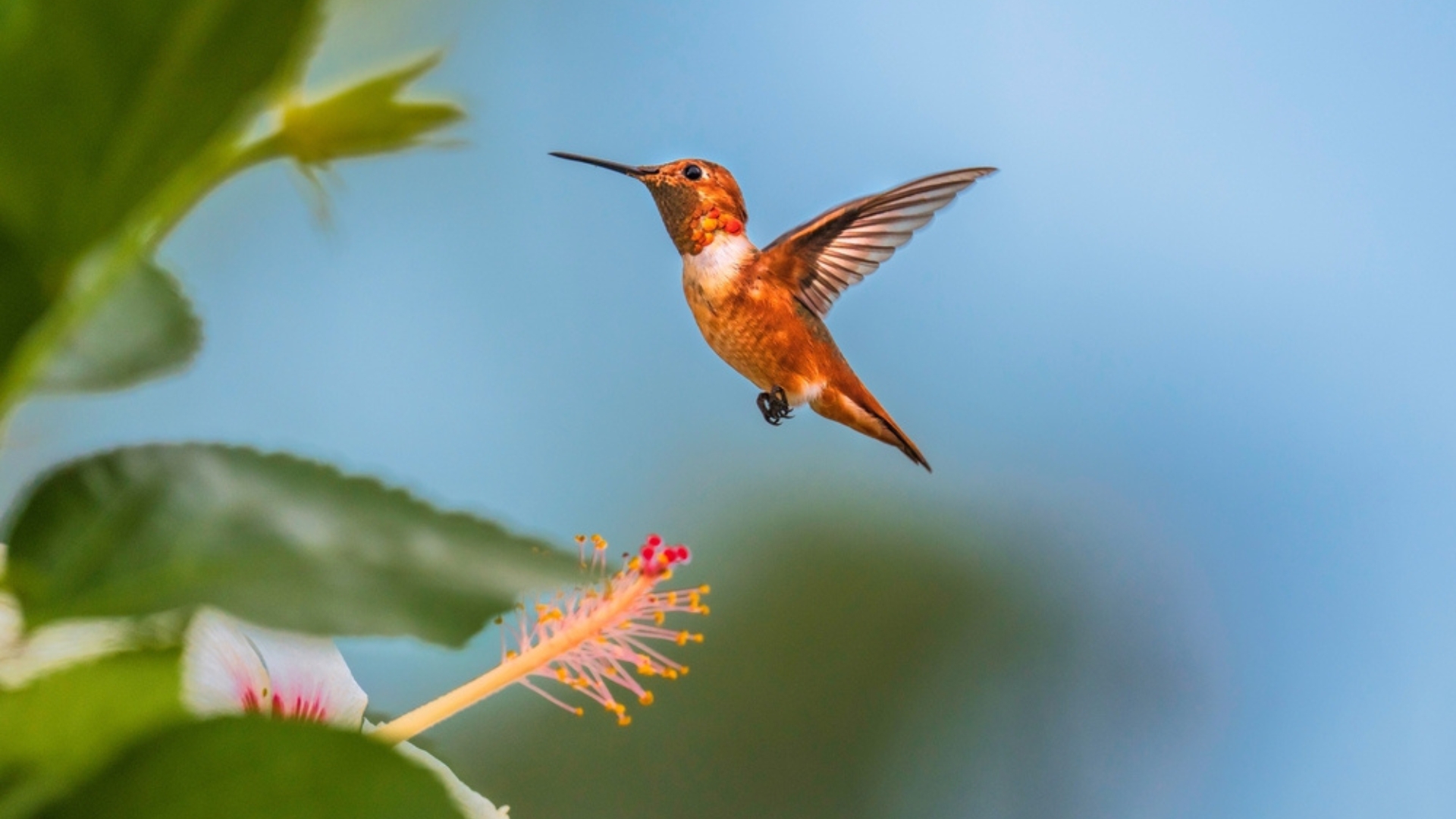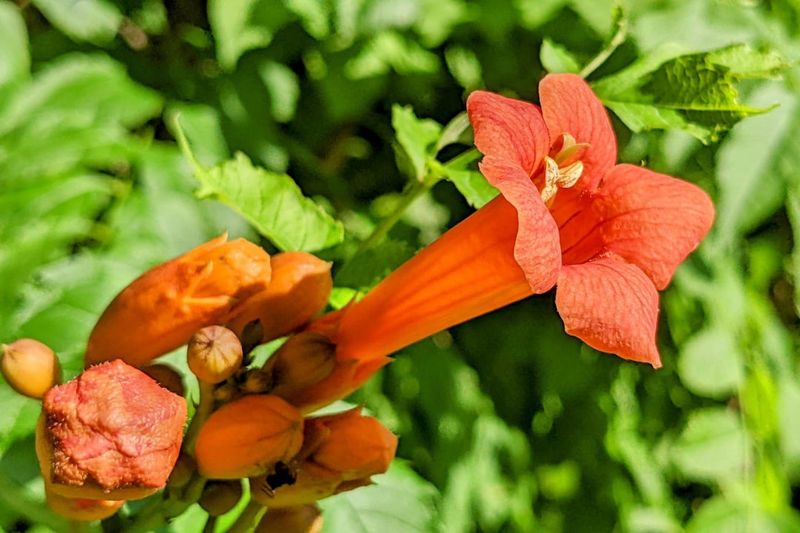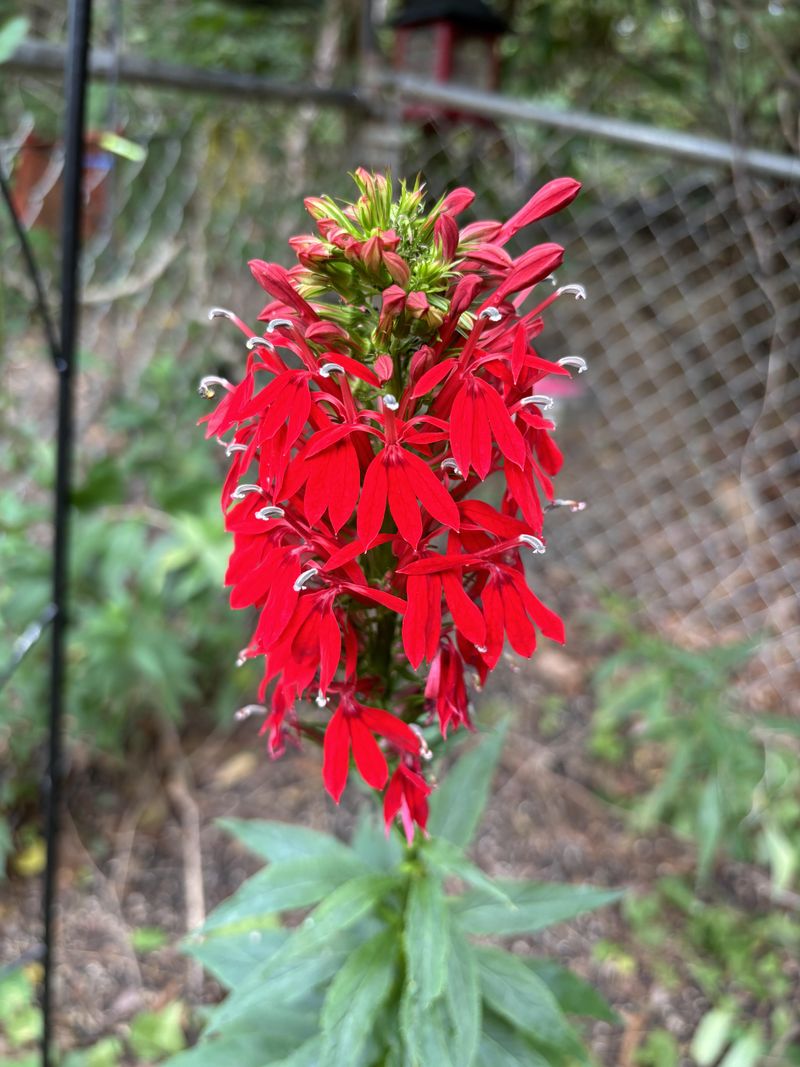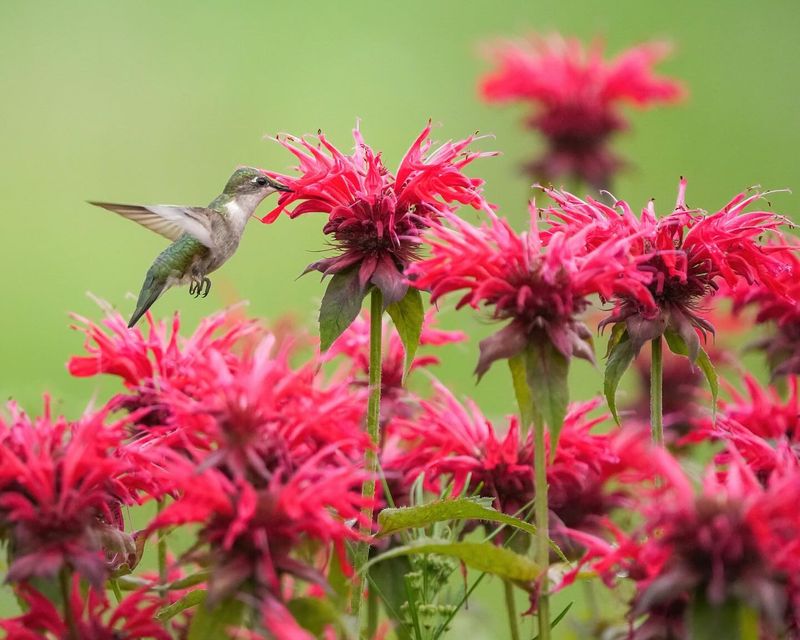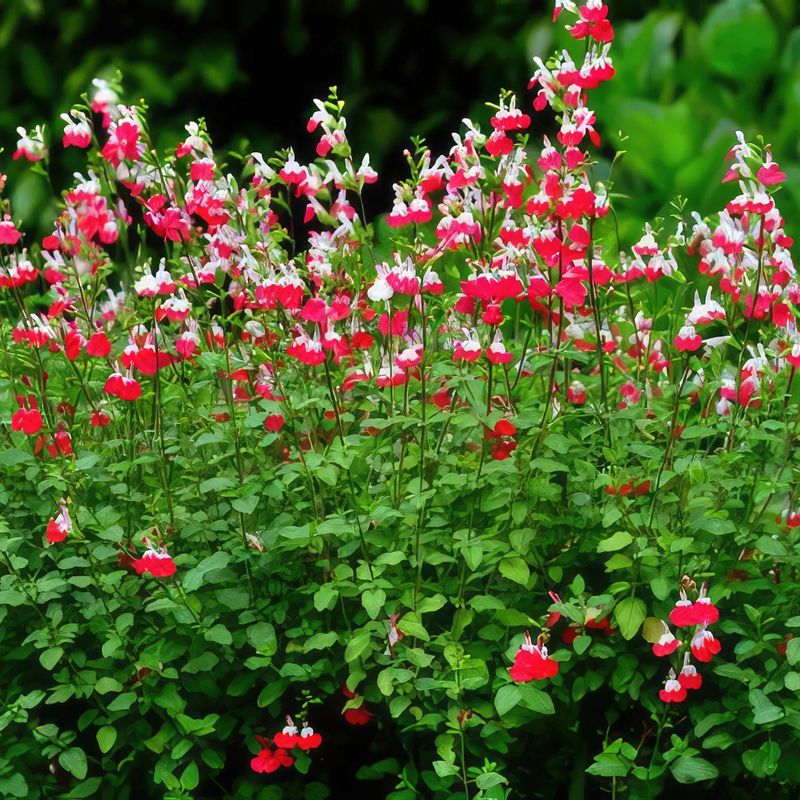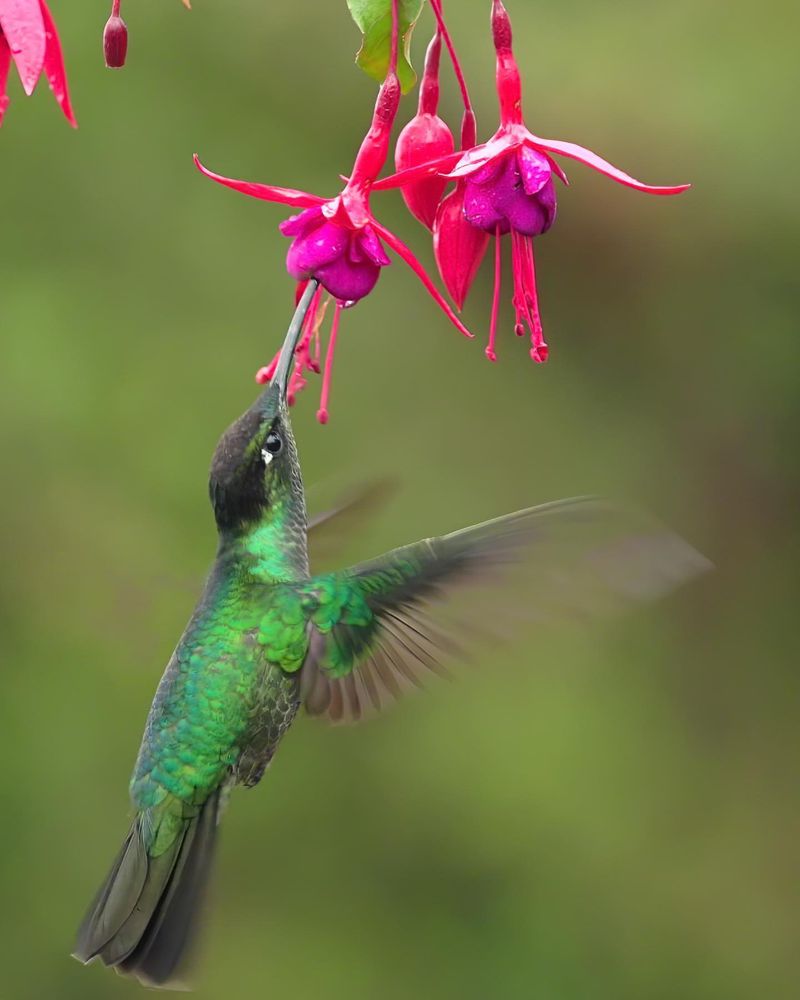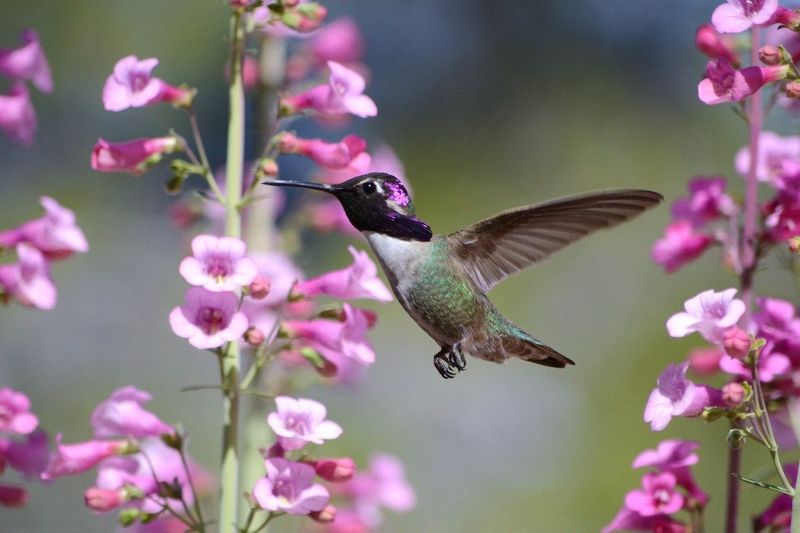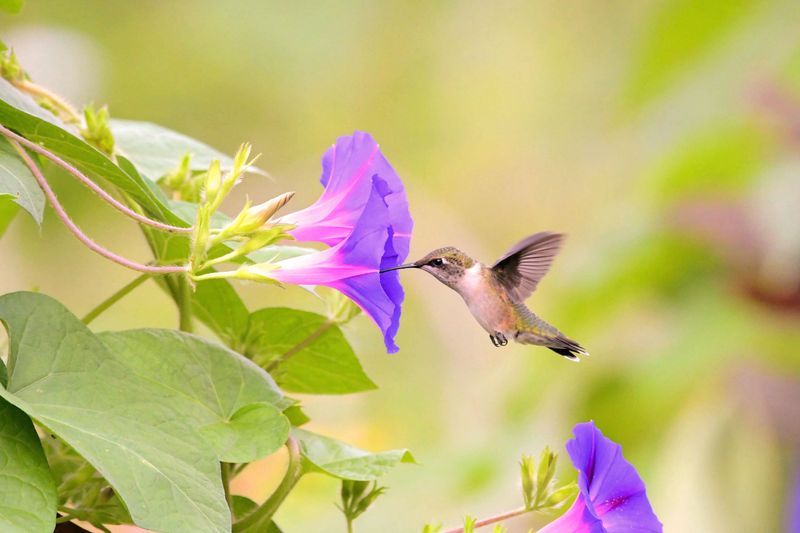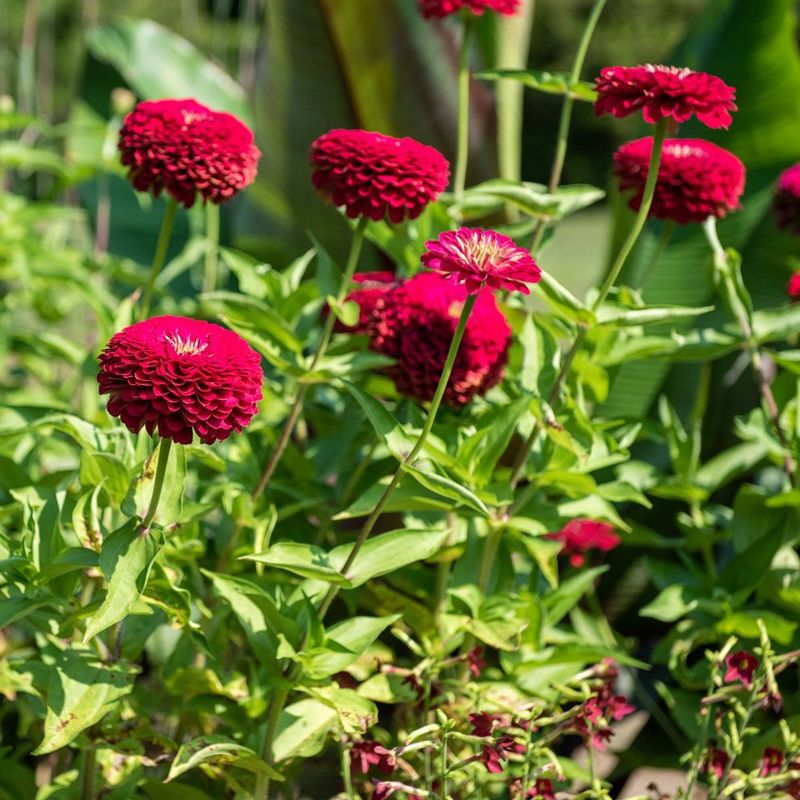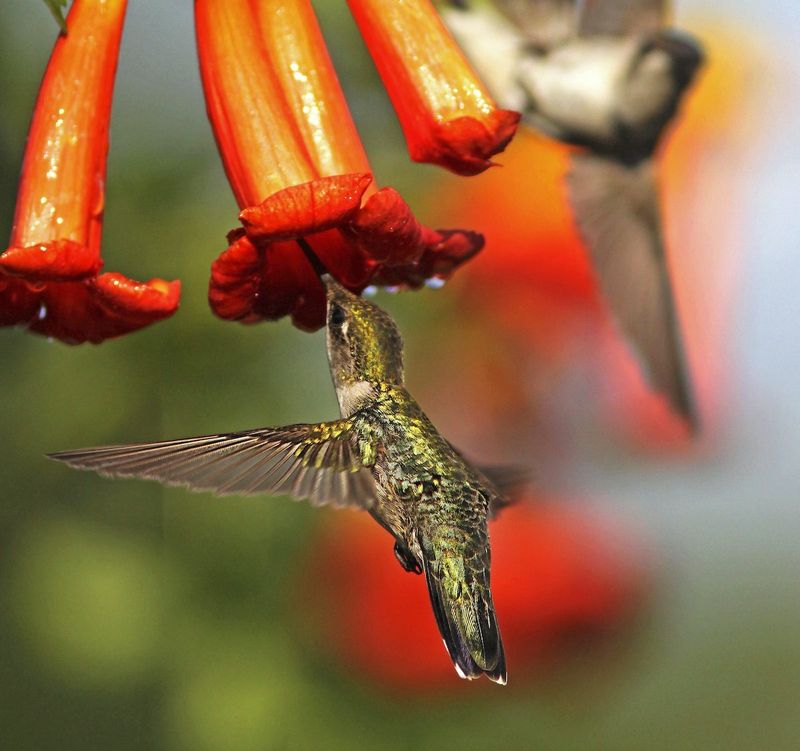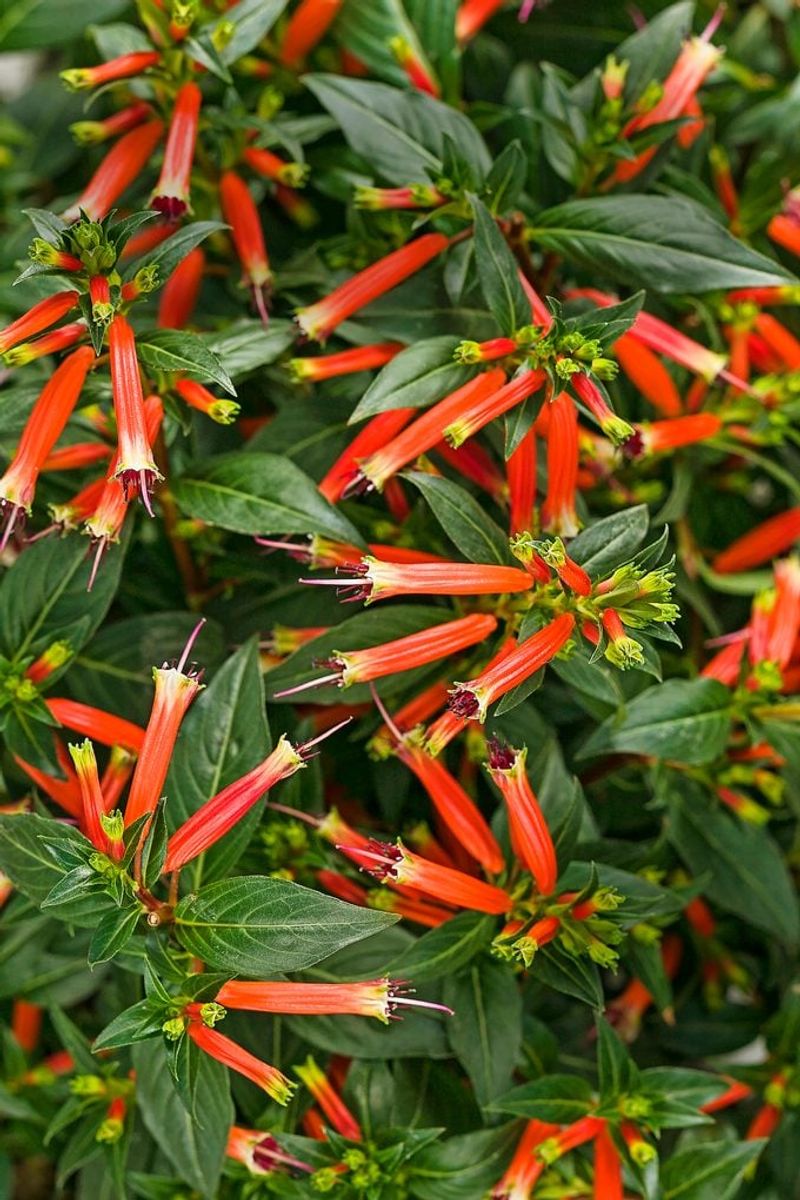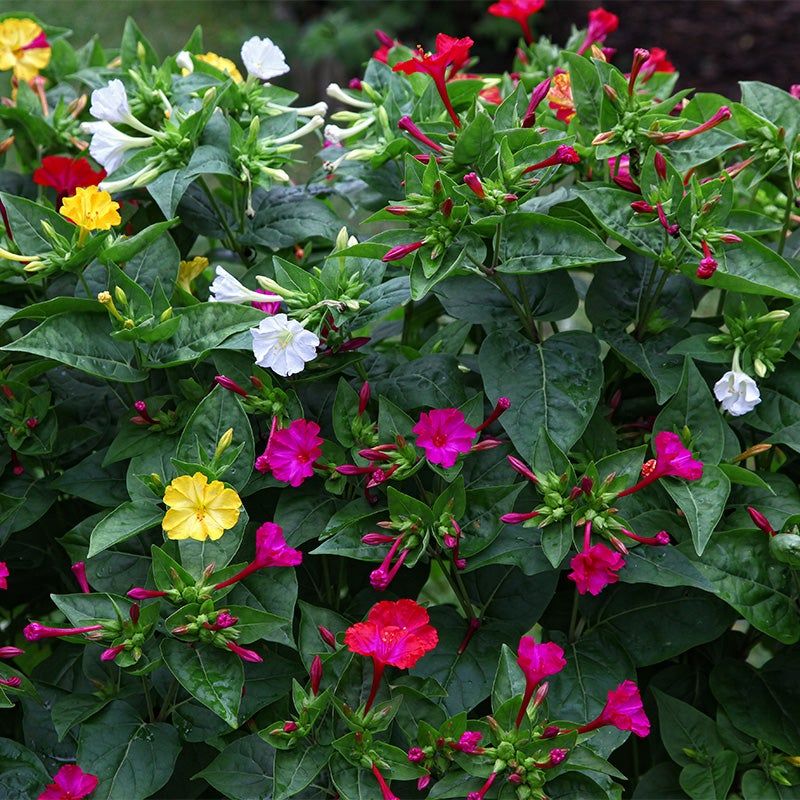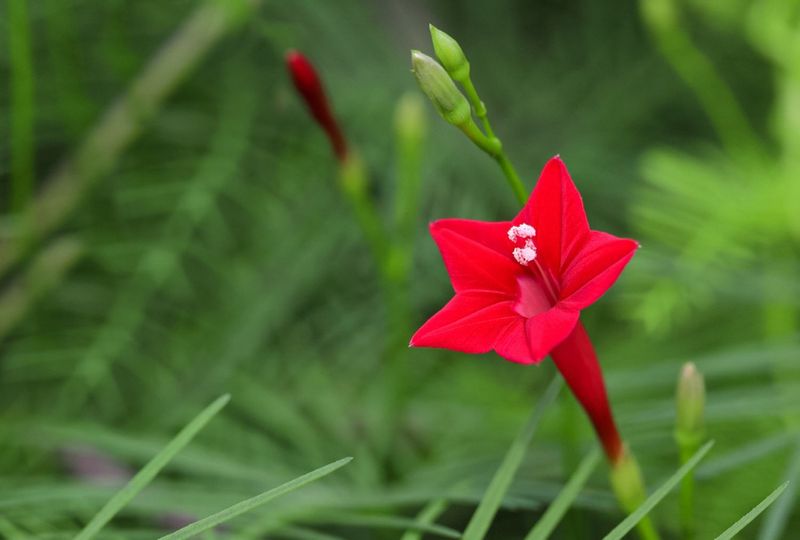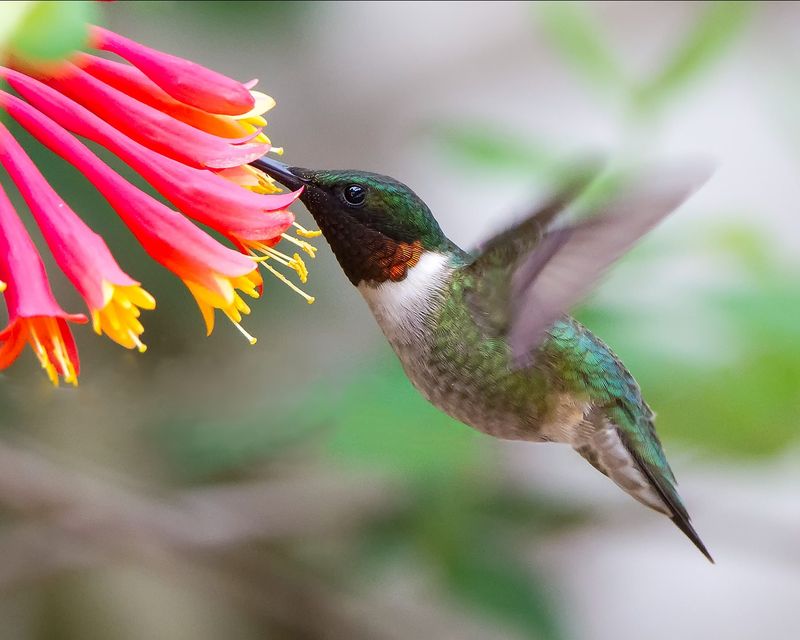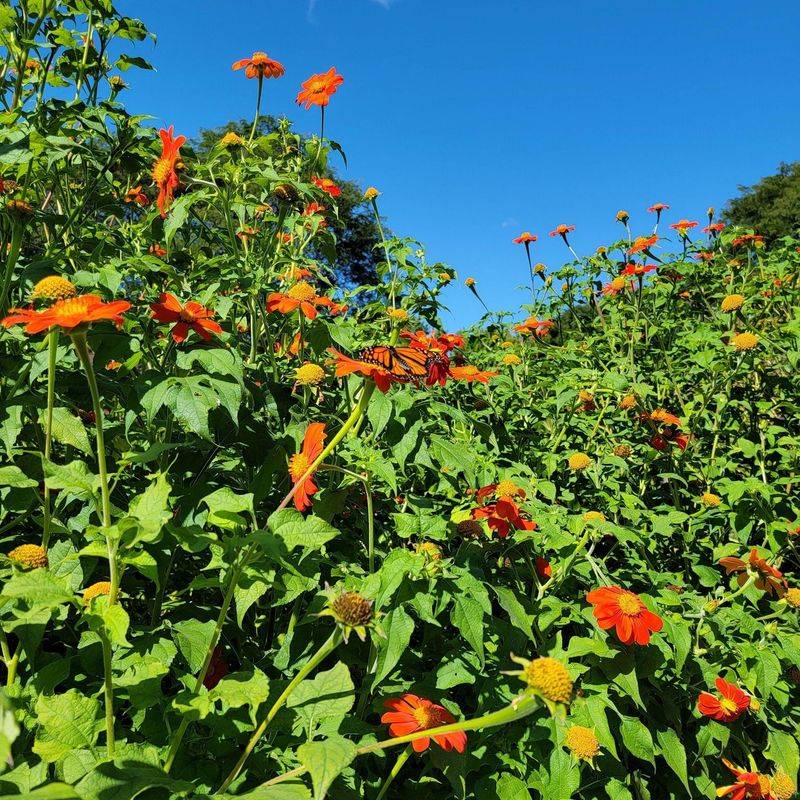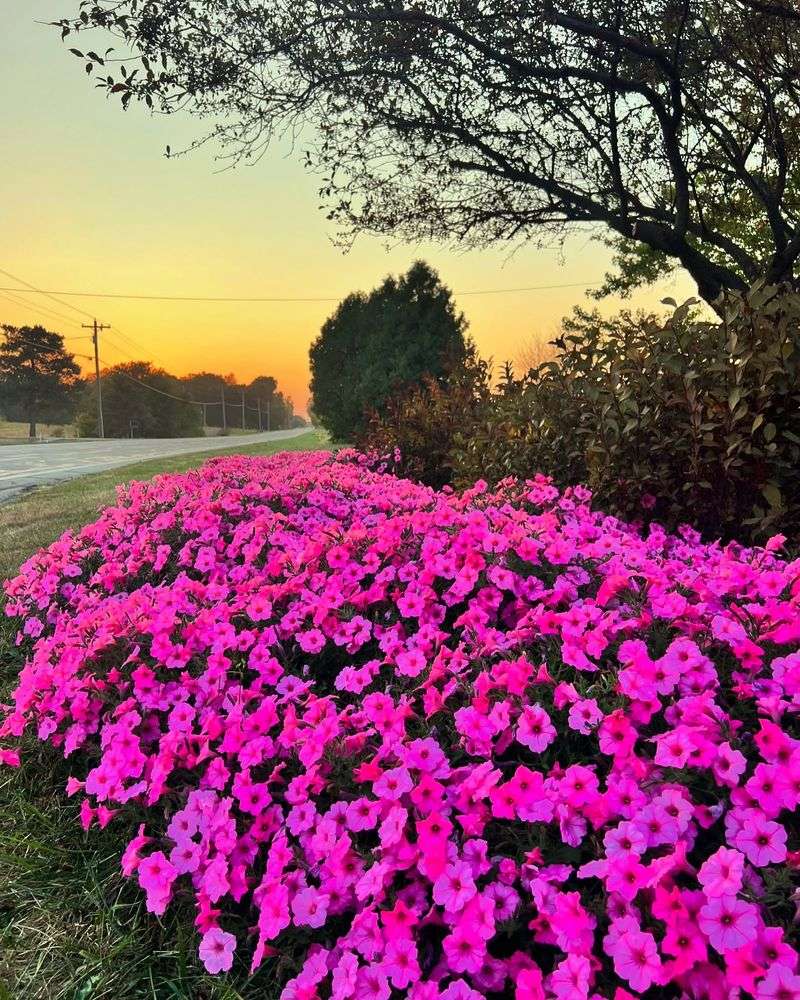Spring gardening season brings a wonderful opportunity to create a hummingbird haven right in your own backyard. These tiny, vibrant birds are attracted to specific flowers that provide the sweet nectar they crave.
Planting fast-growing blooms in spring gives you a double reward – beautiful flowers that quickly transform your garden and the magical sight of hummingbirds darting among your plants.
1. Trumpet Vine
Nature’s perfect hummingbird magnet, trumpet vine explodes with growth in spring, climbing up to 40 feet in a single season. The orange-red tubular flowers produce copious amounts of nectar that hummingbirds find irresistible.
This vigorous climber needs strong support and regular pruning to keep it in check. Plant it against a sturdy fence or arbor where you can enjoy watching hummingbirds hover as they feed from the trumpet-shaped blooms all summer long.
2. Cardinal Flower
Sporting brilliant red spikes that rise dramatically from leafy bases, cardinal flowers are hummingbird magnets that grow quickly once established. Their intensely colored blooms appear in midsummer, providing nectar when many spring flowers have faded.
Unlike many sun-loving hummingbird plants, cardinal flowers thrive in partial shade and moist soil. Native to North America, they’re perfectly adapted to attract our native hummingbird species who evolved alongside them, creating a perfect ecological partnership in your garden.
3. Bee Balm
Crowned with shaggy, firework-like blooms in red, pink, or purple, bee balm creates an explosion of color that hummingbirds can spot from far away. This native perennial spreads rapidly through underground runners, filling empty garden spaces with fragrant foliage and nectar-rich flowers.
Hummingbirds hover excitedly around bee balm’s tubular florets, perfect matches for their specialized bills.
For maximum hummingbird appeal, choose bright red varieties like ‘Jacob Cline’ which grow quickly and resist the powdery mildew that sometimes affects this beautiful plant.
4. Salvia ‘Hot Lips’
Eye-catching bicolor blooms in red and white make this salvia variety a standout in any garden. ‘Hot Lips’ grows rapidly from spring planting, quickly forming a bushy plant covered with distinctively marked flowers that hummingbirds find irresistible.
What makes this salvia special is its long blooming period, often flowering continuously from late spring until frost. The drought-tolerant nature means less watering for you while still providing a reliable nectar source for hummingbirds throughout the seasons.
5. Fuchsia
Dangling like tiny ballerinas from graceful stems, fuchsia flowers offer hummingbirds a nectar-filled paradise.
Their pendant shape seems custom-designed for these hovering birds, who can easily access the sweet reward inside each bloom. Fuchsias grow quickly in hanging baskets or containers, making them perfect for patios and small spaces.
Look for heat-tolerant varieties if you live in warmer regions. Their rapid growth from spring planting means you’ll have hummingbird visitors by early summer, drawn to the distinctive purple and pink or red blooms.
6. Penstemon
Lightning-fast growth makes penstemon a spring garden superstar. From small starter plants, these native beauties quickly produce tall spikes adorned with tubular flowers in shades ranging from scarlet red to purple, pink, and white.
Hummingbirds dive straight for the nectar-rich tubes, perfect matches for their specialized bills. Drought-tolerant once established, penstemon keeps blooming even during dry spells, ensuring your garden remains a hummingbird hotspot throughout summer.
7. Morning Glory
From tiny seeds planted in spring soil, morning glories race skyward, climbing several feet per week on trellises or fences.
By midsummer, heart-shaped leaves create a verdant backdrop for the trumpet-shaped flowers that open fresh each dawn. Hummingbirds make morning rounds to these nectar-filled blooms, especially attracted to red varieties like ‘Scarlett O’Hara.’
The rapid growth makes morning glories perfect for quickly covering unsightly areas or creating living screens while providing essential hummingbird food.
8. Zinnia
Bursting from seeds to blooms in just weeks, zinnias offer instant garden gratification and hummingbird attraction. Their daisy-like flowers come in every color except true blue, with bright reds and oranges being hummingbird favorites.
Gardeners love zinnias for their no-fuss nature – simply scatter seeds in spring after frost danger passes. The fast-growing plants quickly reach 1-3 feet tall, depending on variety, producing continuous blooms until fall frost if you deadhead regularly.
9. Scarlet Runner Bean
Dual-purpose gardening at its finest! Scarlet runner beans race up trellises or poles, growing several inches daily in warm weather.
Their bright red flowers attract hummingbirds while eventually producing delicious beans for your dinner table. Children love watching these vigorous climbers reach for the sky. Within weeks of spring planting, the vines produce clusters of tubular blooms that hummingbirds visit repeatedly.
Plant them along fences or create tepee structures with poles for an edible, hummingbird-friendly garden feature.
10. Cuphea ‘Vermillionaire’
Nicknamed ‘Firecracker Plant’ for its explosive growth and fiery blooms, this cuphea variety becomes covered with tiny, tubular orange-red flowers that hummingbirds adore. From a small nursery plant, it expands rapidly to form a bushy mound up to 30 inches tall and wide.
Unlike many annuals, ‘Vermillionaire’ keeps blooming without deadheading, producing hundreds of flowers from spring until frost. The tubular shape perfectly matches hummingbird bills, making this plant a guaranteed attraction for these aerial jewels all season long.
11. Four O’Clocks
Growing from thumb-sized tubers or seeds, four o’clocks quickly form bushy plants studded with trumpet-shaped flowers in pink, yellow, white, or magenta.
Named for their late-afternoon blooming habit, these fragrant flowers provide evening nectar for hummingbirds making final feeding rounds. Four o’clocks grow almost anywhere, tolerating poor soil and neglect while still producing abundant blooms.
The plants often self-seed, returning year after year in mild climates. Their rapid growth from spring planting ensures hummingbird visits by early summer.
12. Cypress Vine
Feathery foliage creates a delicate backdrop for the tiny, star-shaped scarlet flowers that make cypress vine irresistible to hummingbirds.
This annual climber grows with astonishing speed, racing up trellises or fences at several inches per day in warm weather. From seeds planted after spring frost, cypress vines quickly reach 10-15 feet, creating living screens adorned with hundreds of blooms.
The slender, tubular flowers might seem too small for hummingbird feeding, but these aerial acrobats expertly probe each one for its sweet nectar reward.
13. Coral Honeysuckle
Unlike its invasive Japanese cousin, native coral honeysuckle combines rapid growth with good garden manners. Tubular flowers in coral-red appear in clusters along the twining stems, broadcasting a clear invitation to hummingbirds.
Spring planting allows this vine to establish quickly, often flowering by early summer. The trumpet-shaped blooms produce copious nectar that hummingbirds access with their specialized bills.
As a bonus, this native vine also produces red berries that attract songbirds, creating a wildlife-friendly garden feature.
14. Nasturtium
From large, wrinkled seeds planted directly in spring soil, nasturtiums quickly sprout into cascading or bushy plants with distinctive round leaves. Their red, orange, or yellow flowers have a funnel shape that guides hummingbirds to the nectar hidden in the back spur.
Nasturtiums thrive on neglect, actually producing more flowers in poor soil than rich garden beds. Both flowers and leaves are edible with a peppery flavor, making them dual-purpose plants for your garden. The fast growth from seed to bloom often takes just 6-8 weeks.
15. Mexican Sunflower
Towering stems topped with fiery orange-red blooms make Mexican sunflower a beacon for hummingbirds. Unlike regular sunflowers, these daisy-like blooms produce nectar that attracts hummingbirds throughout summer and into fall.
From spring-sown seeds, Mexican sunflowers rocket to 4-6 feet tall in just months. Their velvety gray-green foliage creates a striking backdrop for the vibrant blooms. For maximum hummingbird attraction, plant them in groups where their bright color creates an irresistible visual signal to passing birds.
16. Petunia ‘Supertunia Vista Bubblegum’
Exploding with hundreds of pink blooms, this vigorous petunia variety grows rapidly from spring planting to create mounds up to 2 feet tall and wide.
The trumpet-shaped flowers contain nectar that attracts hummingbirds throughout the growing season. Unlike older petunia varieties, ‘Supertunia Vista Bubblegum’ doesn’t need deadheading to keep blooming.
The self-cleaning flowers drop away naturally, allowing the plant to continuously produce new buds. This non-stop flowering habit ensures a reliable nectar source for hummingbirds from spring until frost.

